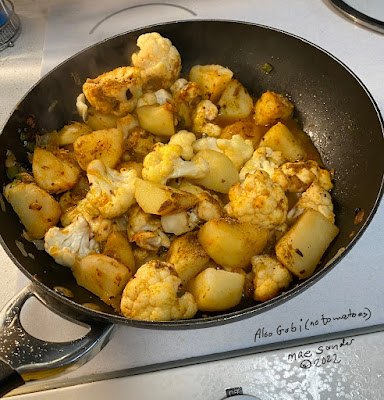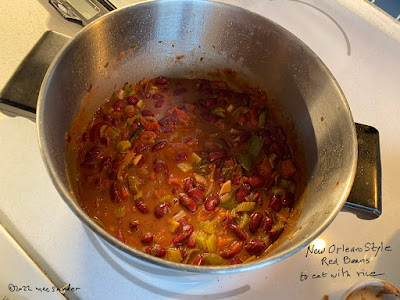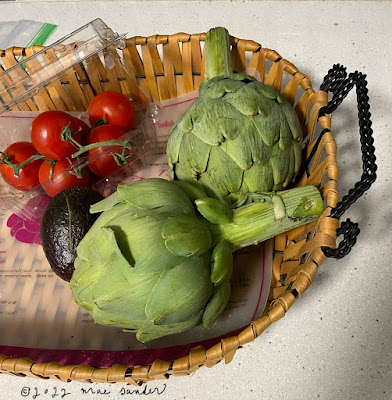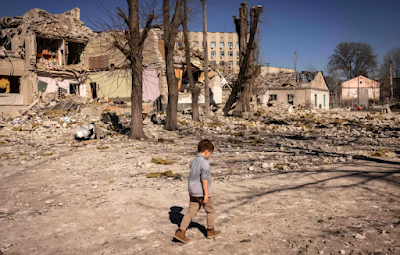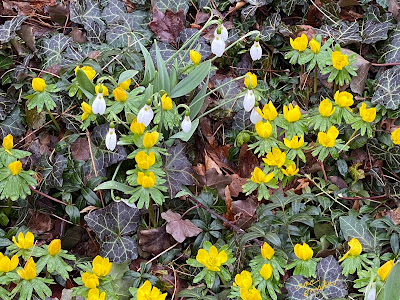“Vladimir Putin’s invasion of Ukraine has sent the prices of many commodities skyrocketing. And it’s not just oil and gas. From a humanitarian point of view, the soaring price of food, especially wheat, may be an even bigger problem. Before the war, Russia and Ukraine produced almost a quarter of the world’s wheat, much of it exported. Both the direct effects of the war and the sanctions imposed on Russia are disrupting that supply; nobody knows how long this disruption may last or how much suffering high food prices will cause around the world, especially in poor countries.” (Paul Krugman, New York Times, March 22, 2022)
“Prior to the Russian invasion, Ukraine was on track for a record year of wheat exports, while Russia's wheat exports were slowing, according to the US Department of Agriculture.” (CNN, March 1, 2022)
Worldwide, consumers are concerned about rising food prices. Several countries in the Middle East and North Africa, especially, depend extensively on wheat from Ukraine and Russia, and may soon face extreme want, as bread is a major part of their diet. As shown in the graphic above, Ukraine is the source of a large number of key food crops. Although the US grows wheat and most other commodities, food prices are global, so the disastrous disruption in supplies caused by the Russian invasion of Ukraine will raise the cost of food here in general. Specific examples are already appearing: for example, a shortage of frozen pizza dough from General Mills is caused by disruptions in wheat supplies. (CNN, March 23, 2022)
Thinking about worldwide food sources inspired me to read the book
Eating to Extinction by Dan Saladino (published 2021). This book explores a serious problem caused by the fact that food production and distribution is now global — an issue that’s very apparent in the coming scarcity resulting from the war. The focus of Saladino’s book is that not only are a few crops the source of most of the world’s nutrition, these crops have become less and less diverse:
“Of the 6,000 plant species humans have eaten over time, the world now mostly eats just nine, of which just three – rice, wheat and maize – provide 50 per cent of all calories. Add potato, barley, palm oil, soy and sugar (beet and cane) and you have 75 per cent of all the calories that fuel our species. Since the Green Revolution, we eat more refined grains, vegetable oils, sugar and meat, and we depend on foods produced further and further away from the places we live. As thousands of foods have become endangered and extinct, a small number have risen to dominance.” (Dan Saladino, Eating to Extinction, p. 8)
Whether it's a good idea for the world to eat this way, the world's population does depend on just a few crops for nutrition. Saladino's focus is not so much on the shrinking choices in diverse places, where more and more cultural foods are no longer the central part of the diet, but on the loss of biodiversity in both major and minor cultivated species of grain, of vegetables, of fruits, of animals, and even of more obscure foods like cocoa and coffee.
Each chapter is a specific study of lost or nearly-lost genetic material that may be critical to the future of food: nearly forgotten heirloom crops of local wheat or rice, nearly extinguished breeds of cattle or pigs, decrease in the variety of apples in orchards worldwide, the loss of diverse potato types, and even the search for one last varietal coffee tree or one lost cocoa plant. The fate of fish is also overwhelming: "Since the advent of industrial fishing the decline of some fish species has been truly shocking; Pacific bluefin tuna down 97 per cent from historic levels; and Mediterranean swordfish, 88 per cent. In more recent times, keystone species such as the Pacific sardine have seen populations crash by as much as 95 per cent." (Eating to Extinction p. 187).
Saladino illustrates the history of foods that are under threat; for example, people everywhere have traditionally relied on grain and legumes as a central element of their diet, but each culture developed and produced the crops that were best suited to their local growing conditions, and have developed ways to prepare these foods that depended on local supplies:
In traditional farming systems, ... the pairing of a cereal with a legume was repeated all over the world. The milpa system of Meso-America, as we’ve seen, put corn with lima and pinto beans; in China, millets grew together with soybeans; in India, millets were planted with mung beans; and in Africa, sorghum went with cowpeas. As well as making soil more productive, this combination of legumes and cereals made a nutritionally richer meal, with more protein and micronutrients than would have been provided by cereal alone.
This agricultural and nutritional harmony has shaped culinary traditions around the world. The great gastronomic cultures all feature combinations of cereals and pulses. Indian dal bhat pairs millet with lentils; Japanese miso unites soybeans and barley; minestra di farro, a Tuscan stew, marries wheat (emmer) and cannellini beans; Palestinian maftoul mixes bulgur wheat and chickpeas; in Mexico there’s frijoles con tortilla; and West African waakye combines rice and peas. There’s even a modern British food version: baked beans on toast. (Eating to Extinction pp. 104-105).
Many of the specific varieties of these grains and vegetables are being (or have been) replaced by just one or two types of industrially grown grain and a small number of vegetable types. Saladino's concern for loss of diversity is about the danger of pests, diseases, and climate change to commodity foods. For example, the well-known rot that threatens the supply of bananas: "although there are more than 1,500 different varieties of banana, global trade is dominated by just one, the Cavendish, a cloned fruit grown in monocultures so vast their scale can only be comprehended from the view of an aeroplane or by satellite." (p. 2).
While reading, I was very interested in all the examples of preserving diversity in global seed banks, searching for lost varieties of plants, and observing how rare animals are kept from disappearing. I also thought about how so many parts of the world are dependent on imports of staple food, and how a crisis far from their homes, like the war, causes a looming shortage of food for families who can't afford the price increases.
In a recent interview with Benji Jones of Vox, "The extinction crisis that no one's talking about," Dan Saladino summarized many of the key points of Eating to Extinction, and I would recommend reading this article if you don't have the time or inclination to read a long book!
Blog post © 2022 mae sander.


